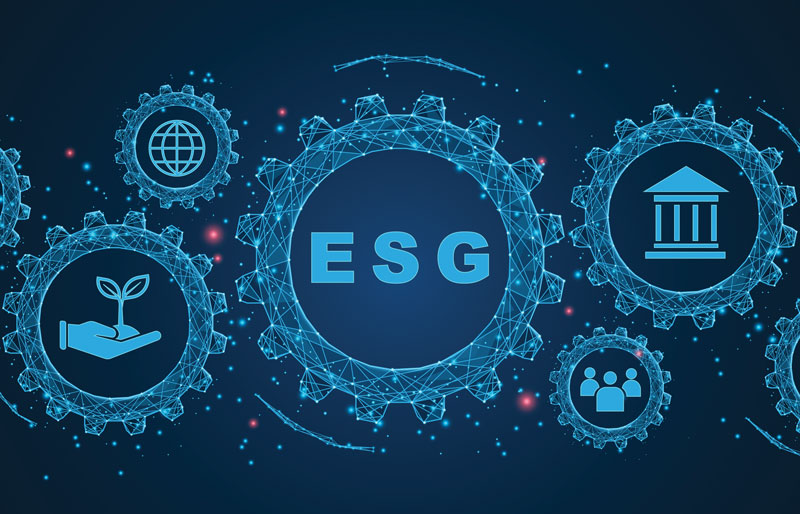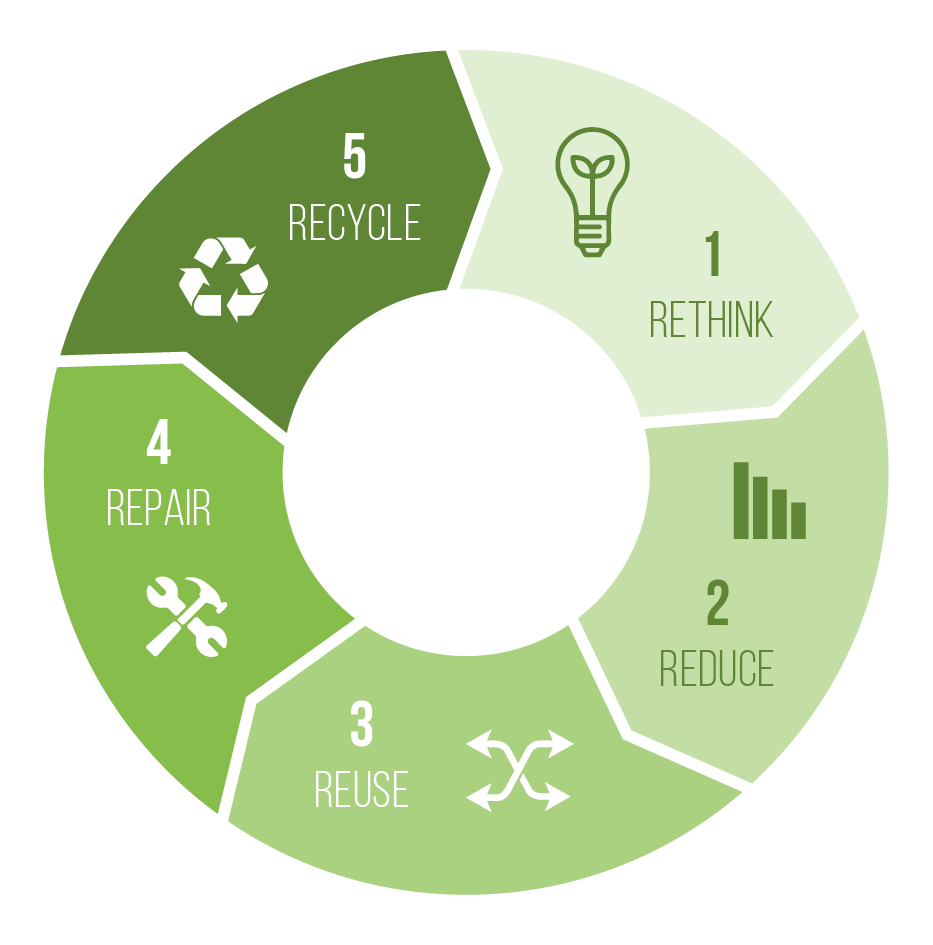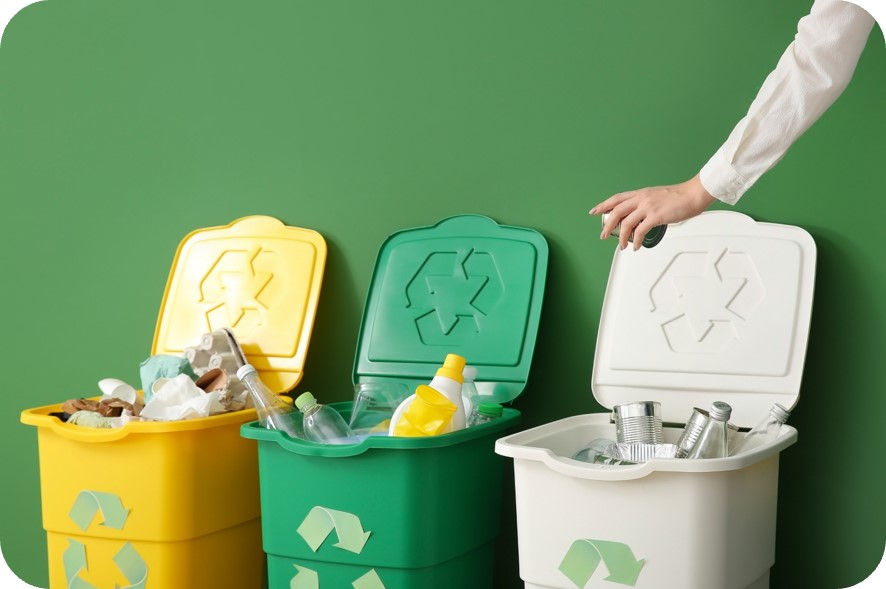
Environmental, Social, and Governance.
Standards and regulations that help measure a business’ impact on the environmental and society. It emphasises the importance of accurate data collection and transparent reporting. Quantitative and qualitative data can be used as evidence to support ESG claims and alignment.
You can find out more about ESG by reading our whitepaper here.

Corporate Social Responsibility.
Less regulated than ESG and focuses on the social aspects and topics more. Arguably more subjective than ESG as well as it does not focus so heavily on regulation and legislation.
Rethink, Reduce, Reuse, Repair, Recycle.
There is an official government waste hierarchy model, but we have adapted it to better suit our business operations and goals. The waste hierarchy refers to the process one should go through when deciding on the use and disposal of a material or product. It is a hierarchy because rethinking and reduction of product use should come first, with recycling being the last resort.
Learn more about our waste hierarchy by checking out our blog on “We don’t sell “eco packaging”.

Refers to when the marketing of a product or business claims to be more sustainable or environmentally friendly than it actually is. This should be avoided at all costs so if a claim is to be made, there such be solid evidence to support it.
A model that emphasises the importance of recyclability and encouraging the life cycle to begin again rather than the item going to landfill or incinerated after it has been used. We currently have a linear economy model where products and items are disposed of rather than finding a new use for them, or recycling them. This model goes hand in hand with the waste hierarchy as well.

The amount of carbon or Greenhouse Gases (tCO2e) released due to business activity or supply chain operations. Carbon footprint is important for understanding your current operations and therefore finding solutions to lower the footprint. tCO2e refers to all Greenhouse Gases when discussing carbon footprint as it is the total carbon dioxide equivalent.
When a business reduces their carbon or Greenhouse Gas emissions as much as possible, and then responsibly offsets the rest. This is NOT the same as carbon neutral as that just refers to when the carbon emitted from the production of a product is offset using carbon offsetting measures. Net Zero is the reduction of carbon emissions in the first place, which is a lot less harmful to the planet. Net Zero targets are made by businesses and governments and are usually aiming towards 2040 or 2050. SBTi is a good source for understanding this further.
Direct emissions.
Emissions that come directly from your own business operations. These are emissions we create and are responsible for e.g. heating, or emissions from the vehicles we own. Scope 1 emissions are well within a business’ ability to control and reduce.
Indirect Emissions.
Emissions that come from purchased electricity and heating. These emissions are still within our own operations, but we do not directly generate the emissions ourselves. Choosing renewable sources of energy is a great way to reduce Scope 2 emissions.
Emissions coming from anywhere else in the value chain, whether that be upstream or downstream. Scope 3 consists of different categories where emissions are broken down even further. Scope 3 accounts for the vast majority of a business’ emissions which is why it is so important for a company to engage with their suppliers and customers on how to reduce emissions.
Extended Producer Responsibility.
Regulation where the producer of a piece of packaging is more responsible for the recycling costs of the materials used. This puts the onus back onto the producer rather than the customer and encourages a circular economy model through recycling initiatives. It also encourages simpler packaging as single-material products will mean lower EPR fees.

Packaging Recovery Note.
Evidence to show the packaging waste has been offset by the packaging producer through purchasing waste that is the same weight of that which has been produced by your business.
Life-cycle assessment.
Analysis of carbon emissions produced by a product or material. It is broken down into areas such as raw materials, transport, and end-of life in order to give an accurate overview of the life cycle of a product. This can inform choices around which product should be used, or where it should be sourced from.
Take a look at our blog on ‘What is a Life Cycle Assessment‘ to learn more.
Refers to when a material can be broken down by organisms or bacteria. It is an unregulated term and therefore its use should be avoided in favour of more scientific terms such compostable and recyclable.